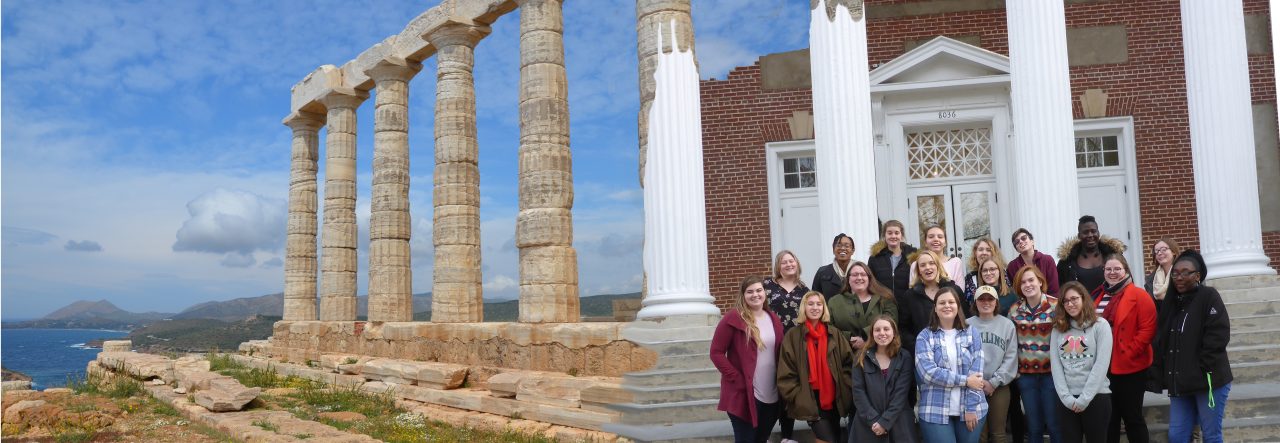By Lilly and Faith
We started our gratefully sunny day at the Athens Polytechnic. Here we learned a bit about the different political parties in Greece and the Greek culture of protest. The Polytechnic is a building of historic significance because in November of 1973 a group of students barred themselves in the law center to protest the current dictatorship. This brave act and the resulting clash with police consequently caused a mass uprising by the Greek people and eventually a coup. Since then, the Polytechnic has stood as a hub of protest and a symbol of resistance against tyranny. Our favorite protest story was that of Loukanikos, a stray dog whose name translates to “Sausage.” He was famous for joining in on protests, always on the side of the anarchists.

Next we walked to the National Archeology Museum. We saw a myriad of artifacts from the Mycenaean period, including golden cups, bronze weapons, and a helmet made of boar’s tusks. Many pieces gave us a glimpse into the impact of international influences on Greek culture. We also got to hear from Carly about the Sounion Kouros, a statue of a young male that previously stood at the temple of Poseidon. There was so much to see in every room of the museum that we were only coaxed into leaving because Professor Salowey promised we could return later in the trip for further exploration.


After we left the museum we had a presentation from Preston in the Byzantine churches we would be seeing. She explained the styles of architecture and iconography that we would see. The first church we visited was the Kapnikarea. It was a beautiful old church a square in the city. From the outside it was a fairly unassuming building but the inside was spectacular. It was covered in Byzantine frescos and had beautiful paintings of icons and Byzantine furniture. Everywhere you looked there was something interesting to see. The next church we visited was just a little ways down the road in another square. It was called Pantanassa and was similar to the other church on the outside but had more brickwork including two small domes. The inside of this church was also beautiful, decorated with intricate ceiling frescos and icons. The last church we visited was for me the most fascinating it was called the Panagia Gorgoepikoos and it is constructed entirely of marble and many pieces are taken from other marble structures such as pagan temples or grave stones. The result of which is a unique building with many different figures on it all coming from different religions and myths.
 After we visited the Byzantine churches we went to lunch at a nice Souvlaki restaurant where we had gyros, Greek salad, dolmas, and other traditional Greek food. After lunch we had the option of exploring the market or returning home and I chose to explore the market. This was a great way to finish off the day and experience more of Greek culture.
After we visited the Byzantine churches we went to lunch at a nice Souvlaki restaurant where we had gyros, Greek salad, dolmas, and other traditional Greek food. After lunch we had the option of exploring the market or returning home and I chose to explore the market. This was a great way to finish off the day and experience more of Greek culture.
